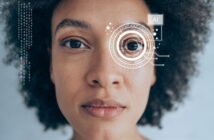By Sohn Butts, Ed.D,
Special to the AFRO
It was just over two years ago when Covid-19 pandemic turned schools across the country, and indeed the world, upside down.
Baltimore City Public Schools, like many other school districts, scrambled to find 21st century educational solutions during a global crisis.
Fast forward.
As Baltimore City Public Schools students approach the end of the first full year of in-person learning since the start of the pandemic, some schools have learned valuable lessons on how to leverage technology in both virtual and traditional learning environments.
One such example can be found at Dallas F. Nicholas, Sr. Elementary School in Baltimore.
Rolonda Brown, the school’s technologist and a reading intervention specialist, is using iPads to record her students’ reading development. Students are then able to play back the recordings of their reading sessions, accelerating their proficiency.
“This is a technology-driven generation, and it is up to us as educators to incorporate innovative ways through technology to excite students into learning,” said Brown, adding that her scholars learn a great deal by listening to and revisiting their student reading sessions.
Teachers at Dallas F. Nicholas Elementary have committed themselves to integrating the technology that became essential during the pandemic into their daily instruction at every grade level.
Nearly 240 students, Pre-K to 5th grade, file into the doors of Dallas Nicholas each school each morning.
The sounds of pattering feet are soon matched by the tapping of fingers logging in to begin their workday. Students as young as the first grade are logging into Clever, a digital educational portal that houses a suite of learning applications. From here students can access educational tools such as Amplify, a literacy proficiency software designed to assist students master the science of literacy.
Classroom management programs like Classdojo allow parents and families to stay connected to teachers, lessons and their student’s progress. The teachers at Nicholas Elementary School are using interactive learning tools such as Kahoot! and Prodigy to leverage the spirit of competition and enthusiasm for learning.
Part of the success of technology integrations stems from Nicholas’ students benefiting from a one-to-one computer program.
This pandemic-driven initiative allows each student to have a dedicated, school issued laptop. In addition, the school has several mobile computer labs, a few iPads and requisites such as projectors and document cameras. Although to some, the hardware is outdated, educators at Nicholas are finding robust ways to incorporate computer software and applications that make a meaningful difference in day-to-day instruction.
Tyhera Watts, a 4th and 5th grade teacher, uses a host of platforms to increase student engagement. Her students are using interactive learning applications like NearPod, a learning platform for whole class instruction as well as independent learning activities.
This veteran teacher is leveraging technology to give students “an opportunity to have daily personalized practice on prerequisite skills they struggle with since or before the pandemic.” Watts said she constantly monitors her student’s needs, both academic and social-emotional, using Jamboards – a virtual whiteboard that allows for individual or whole group interactions.
These teachers, and others like them, have learned valuable lessons through these unconventional times. They have embraced technology and are evolving the teaching profession.
Although there are many technological challenges that persist, the teachers at Dallas F. Nicholas Elementary are proof that technological integration is both possible and present in Baltimore City Public Schools.
Help us Continue to tell OUR Story and join the AFRO family as a member – subscribers are now members! Join here!



